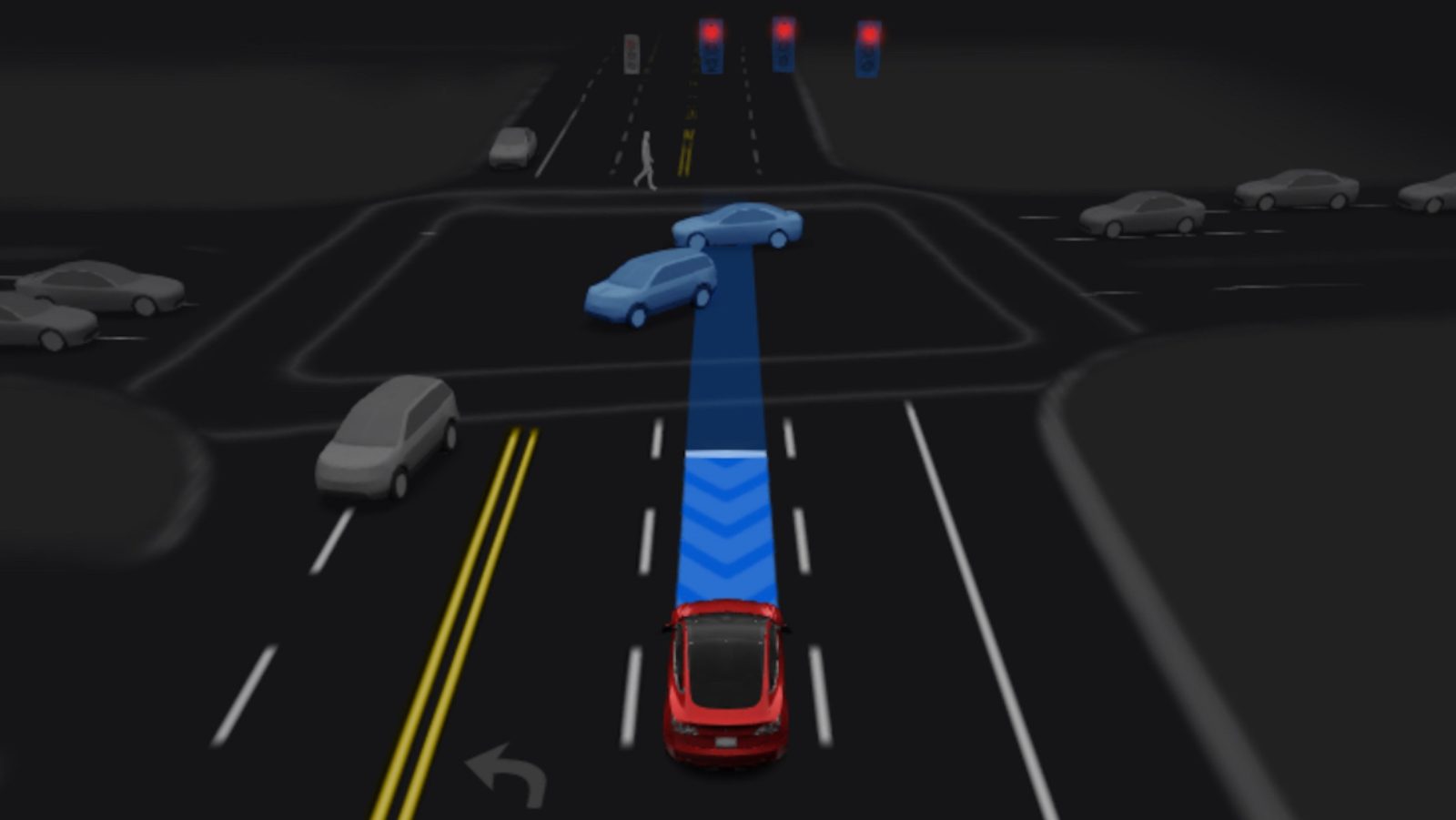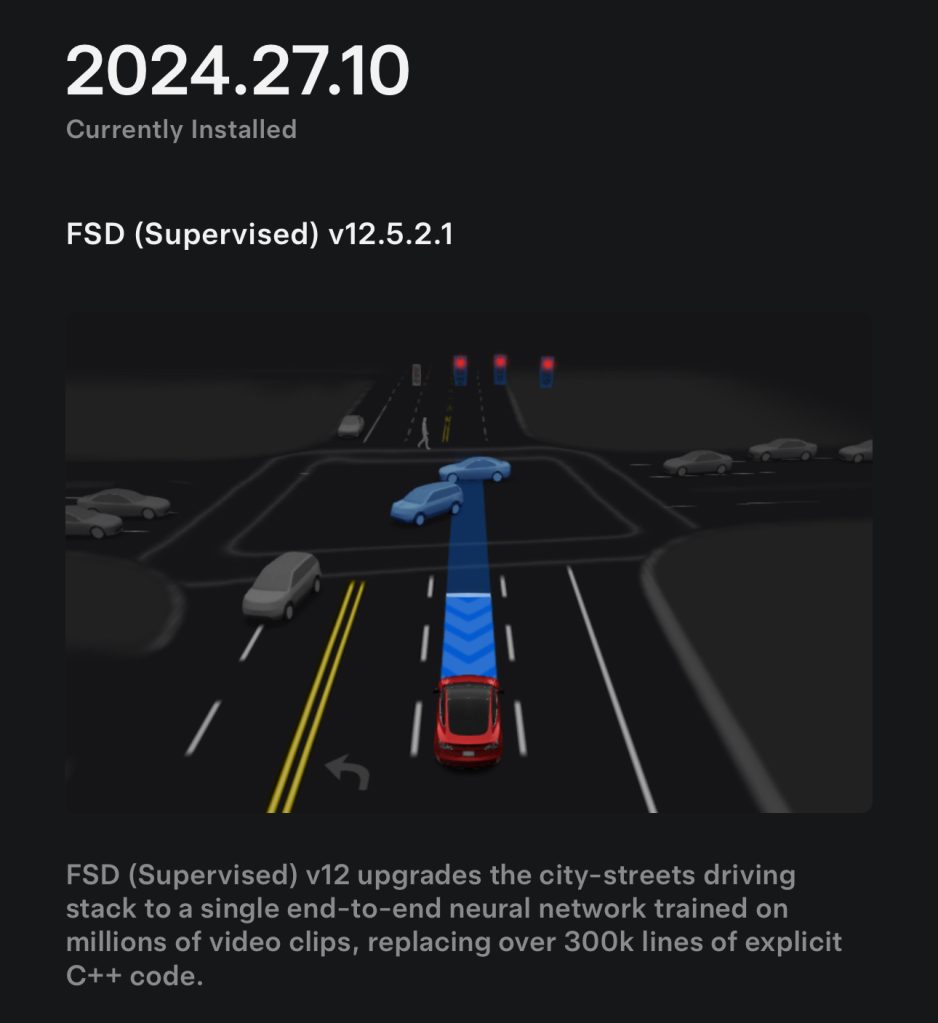
I lastly bought an opportunity to check out Tesla Full Self-Driving (supervised) v12.5 myself, and my first impression is that the system drives extra naturally, however it’s nonetheless harmful.
Vigilance is paramount.
Yesterday, I lastly obtained a software program replace on my Tesla Mannequin 3 that learn ‘v12.5’ (12.5.2.1, to be actual).
I had been ready for it for some time. You see, name me naive, however when Tesla CEO Elon Musk stated final yr that FSD updates on HW4 (newer Tesla autos) would lag about 6 months behind HW3 (older Tesla autos), I believed him:

It made sense. He promised unsupervised self-driving on tens of millions of HW3 autos for years. It is smart that Tesla focuses on delivering on the promise for these older autos with much less computing energy earlier than beginning to make the most of the upper computing energy on newer HW4 autos.
Nonetheless, that didn’t occur.
Earlier this yr, Musk promised vital enhancements to FSD rolling each two weeks:

However I bought FSD v12.3.6 on HW3 Tesla Mannequin 3 on the time and didn’t obtain any extra FSD replace for six months.
As an alternative, Musk admitted that Tesla now must optimize its FSD code to work on older HW3 autos, and HW4 autos are getting extra updates sooner – signaling Tesla is reaching the boundaries of the {hardware} on older autos regardless of guarantees made.
Whereas this example has drastically cut back my hopes of Tesla ever delivering on its promise of reaching self-driving on tens of millions of autos offered since 2016, I used to be nonetheless excited to see this within the launch notes on my automotive after an replace this week:

Yesterday, I needed to drive from Shawinigan to Trois-Rivieres (25 miles) and again. It was a great alternative to check out the system on each floor streets and highways.
My first impression is that there are vital enhancements in driving consolation. It drives far more naturally; the auto velocity mode characteristic helps so much. It drives at a velocity that is smart for the street slightly than sticking to the velocity limits plus or minus what you inform it.
The brand new driver monitoring system, which is vision-based slightly than sending alerts asking you to tug on the wheels regardless that you might be holding it, additionally helps make the system really feel extra pure.
Now, for those who don’t look forward to the street for just a few seconds, you get an alert on the display screen to concentrate to the street, which matches away for those who carry your consideration again to it or give inputs to the steering wheel.
These had been the primary modifications. I didn’t see a major enchancment in efficiency, however the system is a minimum of extra satisfying to make use of now. It makes utilizing Tesla FSD much less like a job and extra like a characteristic, which is a welcomed change after greater than two years of “FSD Beta” and now “Supervised FSD”.
I needed to disengage the system as I used to be approaching my vacation spot as a result of the automotive insisted on going into the appropriate lane after I wanted to be on the left to cease. This was a minor annoyance, however a disengagement nonetheless.
On the way in which again, the automotive slowed down from my set velocity on the freeway for seemingly no cause. It’s a widespread drawback with Tesla FSD that I had in nearly each iteration of the system. it may be harmful on highways, however this time, it solely slowed down by about 5-8 km/h and went again to the set velocity in just a few seconds with out having to disengage.
Nonetheless, shortly after, I had a extra vital situation that resulted in a crucial disengagement.
I needed to make a left flip right here:

A automotive was coming from the left, but it surely was fairly far and never coming quick. I’d have carried out the flip with out hesitation, however I wasn’t positive if FSD, which is usually on the cautious facet in these turns, would or if it might watch for the automotive to cross.
It determined to go, but it surely was nearly as if it modified its thoughts a 3rd of the way in which into the flip because it stopped, or at least decelerated drastically into the flip; it’s onerous to inform trigger I needed to react quick.
The entrance of the automotive was already in the way in which, so I needed to take over and full the flip quicker to verify the upcoming automotive didn’t crash into me.
Up till that time, I used to be fairly impressed by FSD v12.5. It’s a great reminder that because the tech improves and feels higher, particularly extra pure like this replace, it’s tremendous vital to stay hyper-vigilant. The smoothness of this replace can induce overconfidence, however it’s nonetheless liable to errors, as I used to be rapidly reminded.
Electrek’s Take
Whereas I’m impressed and I believe it is a crucial step as FSD is now beginning to really feel like an precise characteristic slightly than simply homework for Tesla prospects to coach a system that Tesla offered to us years in the past, I nonetheless discover it onerous to see a path from this to unsupervised self-driving, particularly on HW3 automobiles.
Clearly, this was simply my first drive, and I have to spend a bit extra time with the system for a full evaluation, however I had two disengagements, together with a crucial one, in about 50 miles. We’re nonetheless very removed from unsupervised.
My important concern is that because the system feels higher, like with this replace, extra individuals will begin getting complacent with it, which may result in extra accidents. I hope that Tesla’s new driver monitoring system will counter that potential complacency.
What do you assume? Tell us within the remark part beneath.
FTC: We use earnings incomes auto affiliate hyperlinks. Extra.



